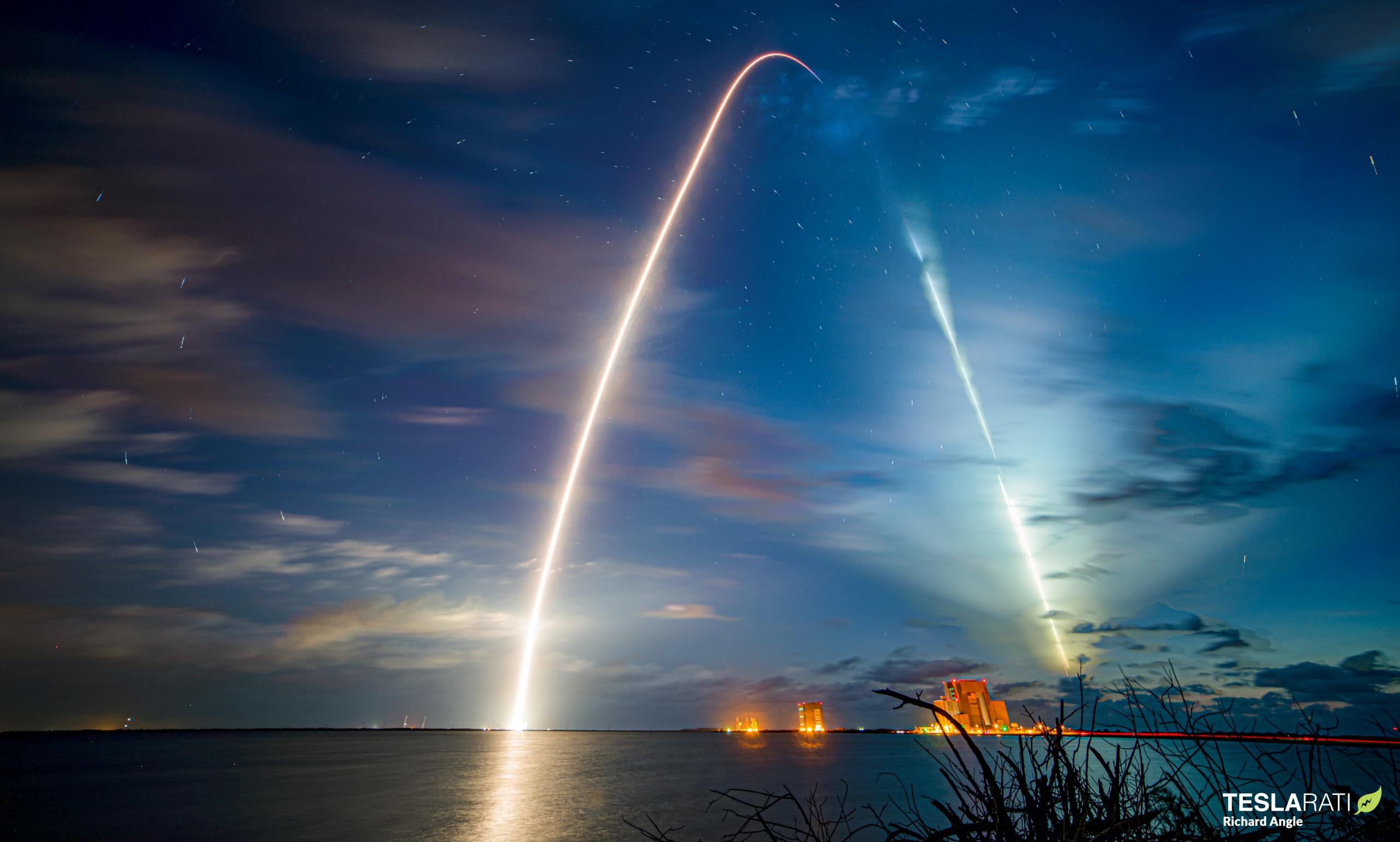
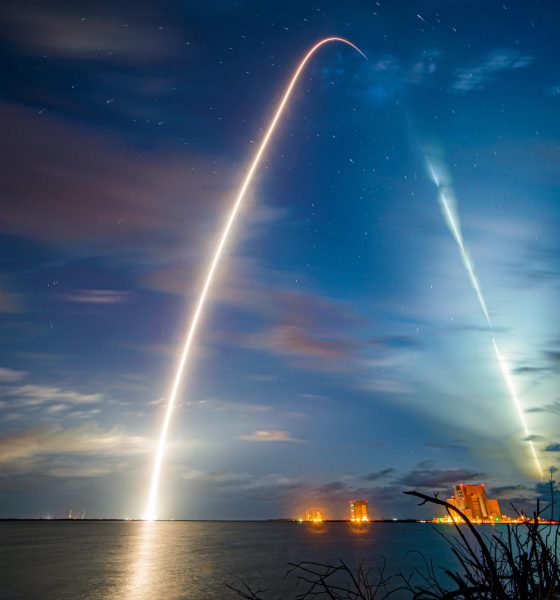
News
SpaceX launches astronauts on flight-proven rocket and capsule in spaceflight first
For the first time in history, SpaceX has sent astronauts into space inside a reused Crew Dragon space capsule with the help of a flight-proven Falcon 9 rocket booster, kicking off a new era of flight-proven human spaceflight.
Aside from NASA’s Space Shuttle, whose orbiter and solid rocket boosters were routinely refurbished for three decades, no other crewed spacecraft or rocket in the history of spaceflight has launched astronauts more than once. SpaceX, a private company, aims to change that and become the second entity of any kind to reuse a crewed spacecraft or rocket. Even more significantly, a successful launch would make Crew Dragon the first space capsule – and Falcon 9 the first liquid rocket – of any kind to be reused on an astronaut launch.
After high winds and seas hundreds or thousands of miles downrange scrubbed a Thursday, April 22nd attempt, weather cooperated on Friday, permitting a flawless liftoff at 5:49 am EDT (09:49 UTC). Excluding nature, the mission has been a flawless technical success from well before launch to well after liftoff, continuing to demonstrate SpaceX’s extraordinary expertise and the refined nature of Falcon 9 and Dragon.
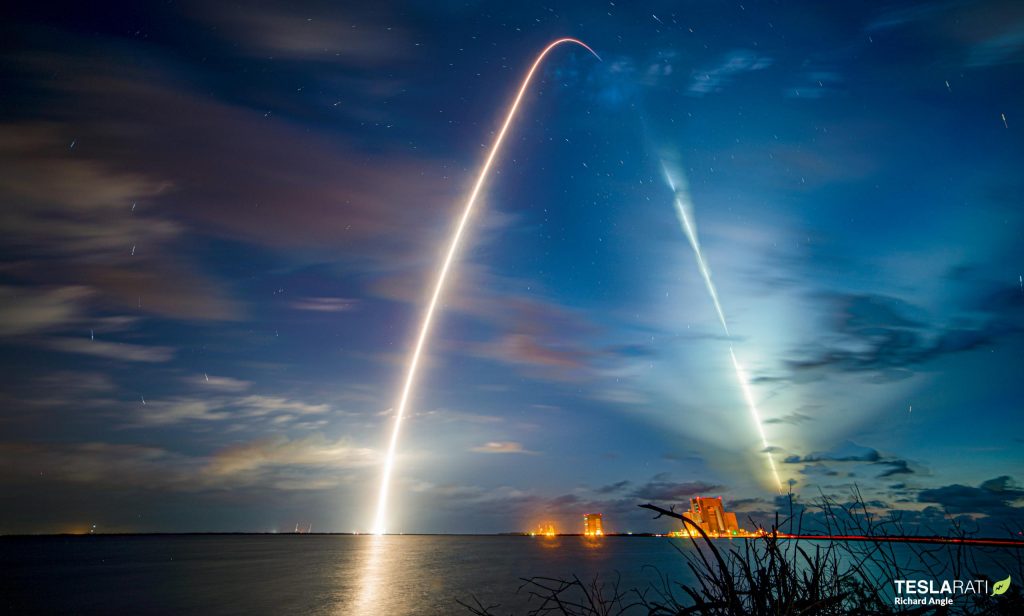
Now safely in orbit, Crew Dragon “Endeavor” (capsule C206) and astronauts Akihiko Hoshide, Thomas Pesquet, Shane Kimbrough, and Megan McArthur have a ~23-hour free-flight ahead of them as their SpaceX spacecraft autonomously works to rendezvous with the International Space Station (ISS). That rendezvous will require five major burns of Draco maneuvering thrusters, the first of which was completed around 40 minutes after reaching orbit.
Barring surprises, Crew Dragon C206 is scheduled to dock with the ISS for the second time no earlier than (NET) 5:10 am EDT (09:10 UTC) on Saturday, April 24th. If successful, the Crew-2 Dragon will join SpaceX’s Crew-1 Dragon at a docking port just a handful of meters away, marking the first time that two Crew Dragons have been simultaneously docked at the ISS.
A bit less than five months ago, the first upgraded Cargo Dragon 2 spacecraft – an uncrewed version of Crew Dragon – joined the same Crew-1 Dragon in orbit and at the ISS, marking a significant first for SpaceX. As the company itself made clear at the time, that milestone was expected to kick off a virtually uninterrupted one to two years of Dragon operations in space, meaning that every additional Crew or Cargo Dragon launch would make for two Dragons in orbit. Crew-2 is the second of those guaranteed dual-Dragon occurrences since Crew-1 launched and docked with the ISS in November 2020.
Pending an equally successful rendezvous with the ISS, Friday’s flawless Crew-2 launch means that the Crew-1 Dragon and astronauts Shannon Walker, Soichi Noguchi, Mike Hopkins, and Victor remain on schedule to depart the ISS and return to Earth on April 28th after six months in orbit. SpaceX’s next Dragon mission – Cargo Dragon 2’s second flight, CRS-22 – is scheduled to launch no earlier than (NET) June 3rd, 2021.
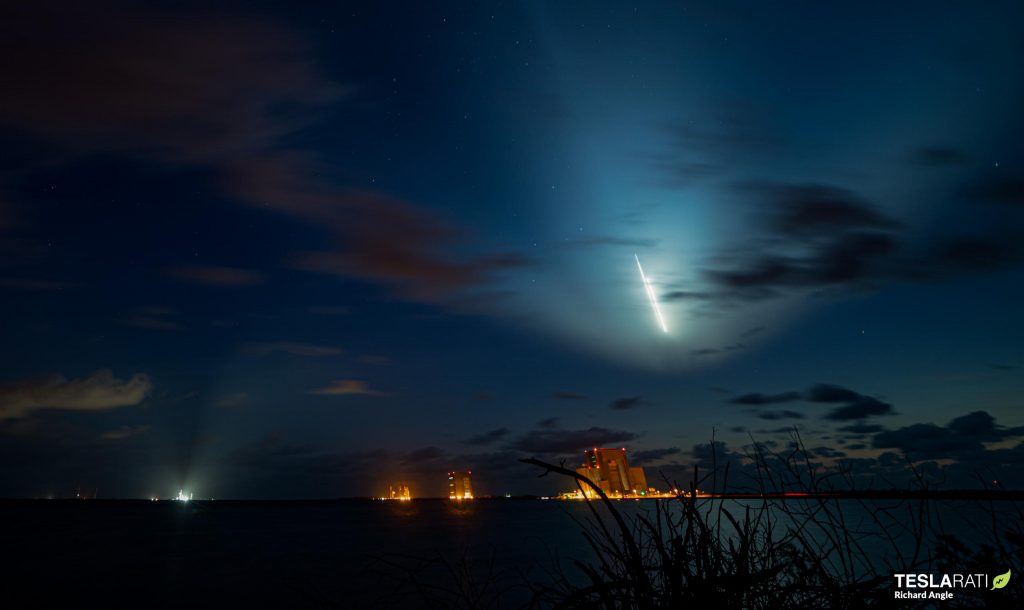

News
Tesla Cybercab tests are going on overdrive with production-ready units
Tesla is ramping its real-world tests of the Cybercab, with multiple sightings of the vehicle being reported across social media this week.

Tesla is ramping its real-world tests of the Cybercab, with multiple sightings of the autonomous two-seater being reported across social media this week. Based on videos of the vehicle that have been shared online, it appears that Cybercab tests are underway across multiple states.
Recent Cybercab sightings
Reports of Cybercab tests have ramped this week, with a vehicle that looked like a production-ready prototype being spotted at Apple’s Visitor Center in California. The vehicle in this sighting was interesting as it was equipped with a steering wheel. The vehicle also featured some changes to the design of its brake lights.
The Cybercab was also filmed testing at the Fremont factory’s test track, which also seemed to involve a vehicle that looked production-ready. This also seemed to be the case for a Cybercab that was spotted in Austin, Texas, which happened to be undergoing real-world tests. Overall, these sightings suggest that Cybercab testing is fully underway, and the vehicle is really moving towards production.
Production design all but finalized?
Recently, a near-production-ready Cybercab was showcased at Tesla’s Santana Row showroom in San Jose. The vehicle was equipped with frameless windows, dual windshield wipers, powered butterfly door struts, an extended front splitter, an updated lightbar, new wheel covers, and a license plate bracket. Interior updates include redesigned dash/door panels, refined seats with center cupholders, updated carpet, and what appeared to be improved legroom.
There seems to be a pretty good chance that the Cybercab’s design has been all but finalized, at least considering Elon Musk’s comments at the 2025 Annual Shareholder Meeting. During the event, Musk confirmed that the vehicle will enter production around April 2026, and its production targets will be quite ambitious.
News
Tesla gets a win in Sweden as union withdraws potentially “illegal” blockade
As per recent reports, the Vision union’s planned anti-Tesla action might have been illegal.
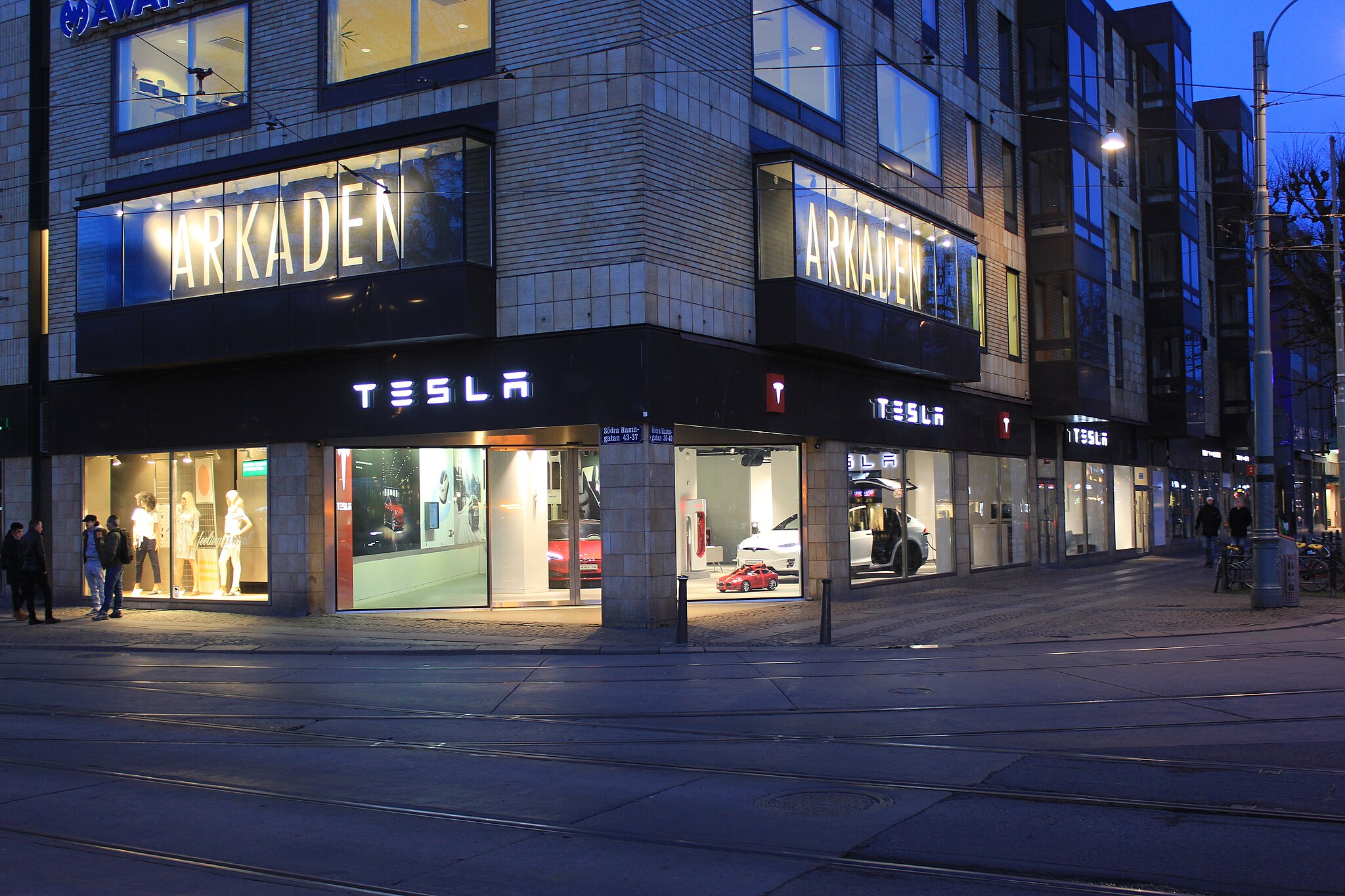
Swedish union Vision has withdrawn its sympathy blockade against Tesla’s planned service center and showroom in Kalmar. As per recent reports, the Vision union’s planned anti-Tesla action might have been illegal.
Vision’s decision to pull the blockade
Vision announced the blockade in early December, stating that it was targeting the administrative handling of Tesla’s facility permits in Kalmar municipality. The sympathy measure was expected to start Monday, but was formally withdrawn via documents sent to the Mediation Institute and Kalmar Municipality last week.
As noted in a Daggers Arbete report, plans for the strike were ultimately pulled after employer group SKR highlighted potential illegality under the Public Employment Act. Vision stressed its continued backing for the Swedish labor model, though Deputy negotiation manager Oskar Pettersson explained that the Vision union and IF Metall made the decision to cancel the planned strike together.
“We will not continue to challenge the regulations,” Petterson said. “The objection was of a technical nature. We made the assessment together with IF Metall that we were not in a position to challenge the legal assessment of whether we could take this particular action against Tesla. Therefore, we chose to revoke the notice itself.”
The SKR’s warning
Petterson also stated that SKR’s technical objection to the Vision union’s planned anti-Tesla strike framed the protest as an unauthorized act. “It was a legal assessment of the situation. Both for us and for IF Metall, it is important to be clear that we stand for the Swedish model. But we should not continue to challenge the regulations and risk getting judgments that lead nowhere in the application of the regulations,” he said.
Vision ultimately canceled its planned blockade against Tesla on December 9. With Vision’s withdrawal, few obstacles remain for Tesla’s long-planned Kalmar site. A foreign electrical firm completed work this fall, and Tesla’s Careers page currently lists a full-time service manager position based there, signaling an imminent opening.
News
Tesla Semi program Director teases major improvements
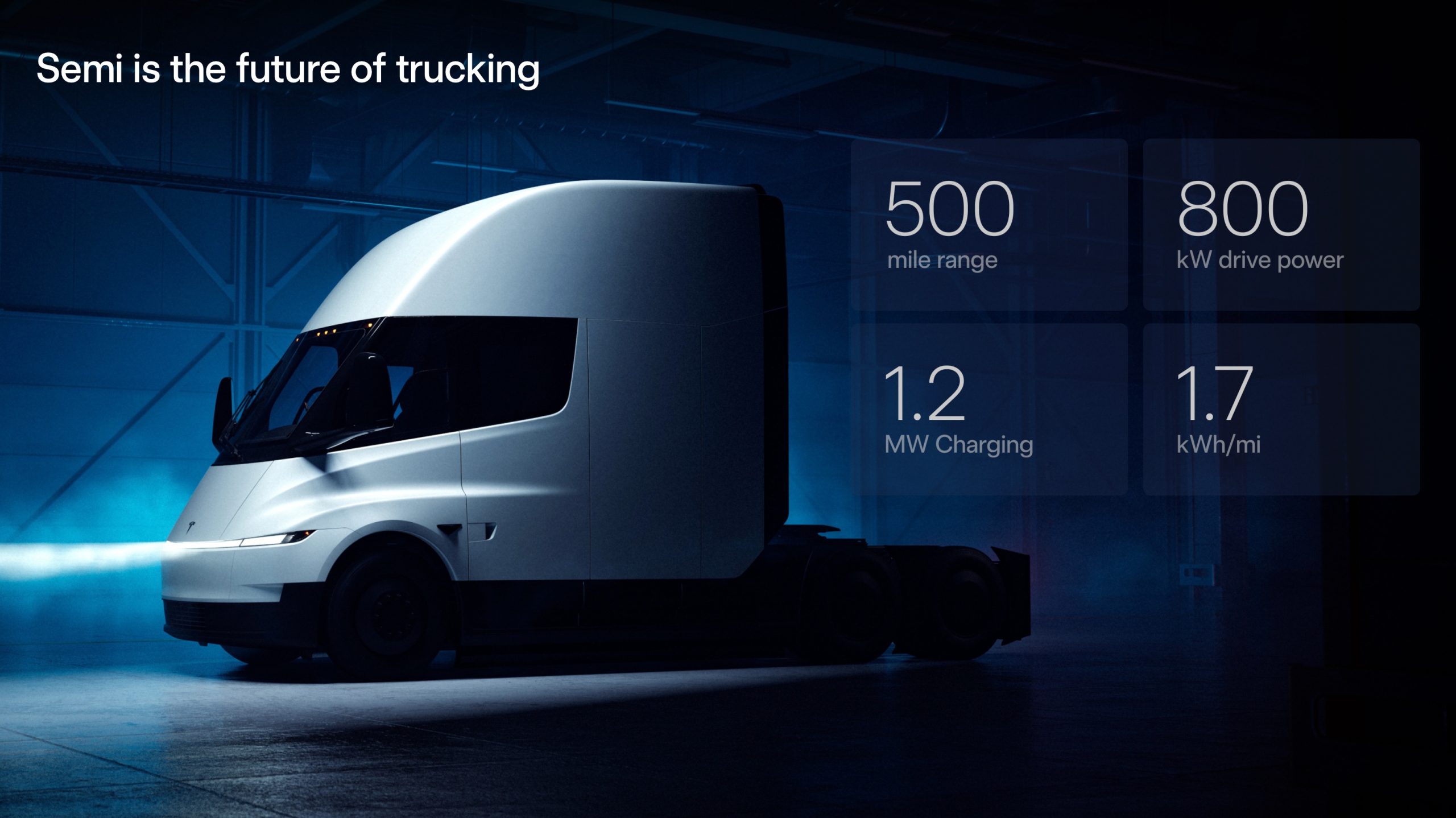
Tesla Semi Program Director Dan Priestly teased the major improvements to the all-electric Class 8 truck on Thursday night, following the company’s decision to overhaul the design earlier this year.
Priestley said he drove the Semi on Thursday, and the improvements appear to be welcomed by one of the minds behind the project. “Our customers are going to love it,” he concluded.
Just drove the redesigned Semi. Our customers are going to love it. https://t.co/KZ88sf1CDL
— Dan Priestley (@danWpriestley) December 19, 2025
The small detail does not seem like much, but it is coming from someone who has been involved in the development of the truck from A to Z. Priestley has been involved in the Semi program since November 2015 and has slowly worked his way through the ranks, and currently stands as the Director of the program.
Tesla Semi undergoes major redesign as dedicated factory preps for deliveries
Tesla made some major changes to the Semi design as it announced at the 2025 Annual Shareholder Meeting that it changed the look and design to welcome improvements in efficiency.
Initially, Tesla adopted the blade-like light bar for the Semi, similar to the one that is present on the Model Y Premium and the Cybertruck.
Additionally, there are some slight aesthetic changes to help with efficiency, including a redesigned bumper with improved aero channels, a smaller wraparound windshield, and a smoother roofline for better aero performance.
All of these changes came as the company’s Semi Factory, which is located on Gigafactory Nevada’s property, was finishing up construction in preparation for initial production phases, as Tesla is planning to ramp up manufacturing next year. CEO Elon Musk has said the Semi has attracted “ridiculous demand.”
The Semi has already gathered many large companies that have signed up to buy units, including Frito-Lay and PepsiCo., which have been helping Tesla test the vehicle in a pilot program to test range, efficiency, and other important metrics that will be a major selling point.
Tesla will be the Semi’s first user, though, and the truck will help solve some of the company’s logistics needs in the coming years.








